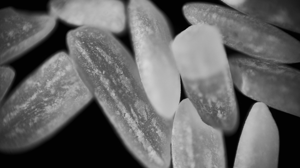A mini-device able to release special monoclonal antibodies directly into a tumour has been tested in Houston with positive results. Experiments are only on animals for the moment.
Tumour immunotherapy has made further progress thanks to advances not so much in therapeutic molecules themselves, but in the way they are administered, which could allow drugs to be 'delivered' even to the deepest and most delicate organs where they cannot normally (or can only partially) reach.
An example of the most promising efforts comes from a trial, conducted only on laboratory animals up to now, of a device the size of a grain of rice, specifically designed to 'transport' CD40 monoclonal antibodies directly into a pancreatic tumour - in particular ductal carcinoma, which is one of the most difficult to treat. Once inserted, the 'grain of rice', which contains nanometre-sized channels (one millionth of a millimetre) and membranes that control the release of antibodies over time, appeared to make the treatment more effective.
CD40 monoclonal antibodies are targeted towards a protein (CD40) that is present in several immune system cells. The interaction of antibodies with this protein can activate the immune cells, making them more aggressive in fighting tumours.
Pancreatic cancer treatment: better results and fewer side effects
As researchers from the Houston Methodist Research Institute (USA) - authors of this study - mentioned in the Advanced Science journal, the ‘grain’ reduced the tumour mass with a dose of immunotherapeutic antibodies four times lower than that usually required to achieve the same result (as the pancreas is difficult to reach it always requires high doses of drugs), with far fewer side effects.
In addition, continuous release (in animals) has produced a significant result even in tumour masses not in contact with the grain, i.e., it creates an abscopal effect (one that goes beyond its primary purpose), which is well known and equally rare, but very important in tumours like pancreatic cancer which tend to form in several places at once. The reduction of masses remained stable for more than one hundred days of observation, a very long time in animals, which could mean permanent tumour control in humans (as seen in cases of improved response to certain immunotherapies).
The procedure to insert the ‘grain’ is also minimally invasive and, given its size, does not appear dangerous, at least in animals, despite the delicacy and 'unpredictability' of an organ like the pancreas.
New trials are planned
In reality, other devices with the same purpose have existed for some time, but they are all larger and have a limited duration. The one created in Houston, however, can release monoclonal antibodies for several weeks, and this too could be a breakthrough. Of course, this will only be true if new experiments confirm the initially promising results.




